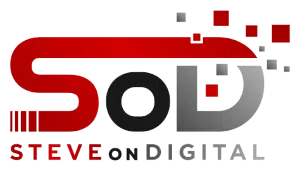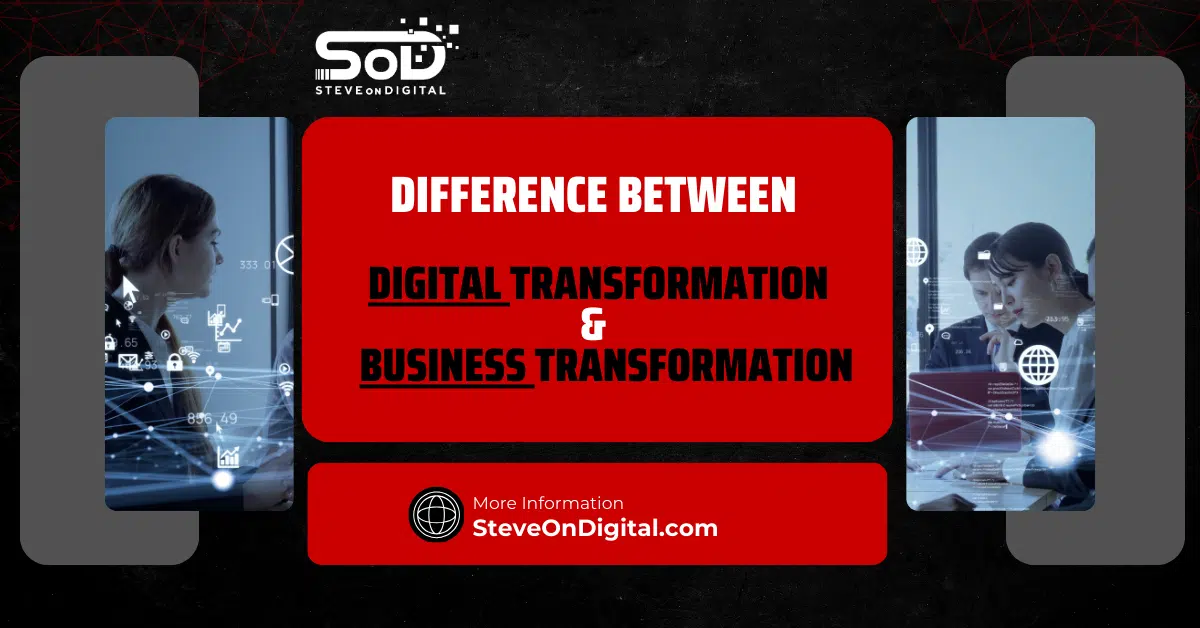The IT team’s primary customers can be senior management, employees, or end customers. Prioritizing depends on the company’s goals and needs.
I bring expertise in digital transformation, backed by an electrical engineering background, an MBA, and a master’s in Project Management. My goal is to help SMEs navigate the digital landscape with practical advice and insights.
As an IT professional, I often hear the question, “Who is the IT team’s primary customer?” This isn’t just a theoretical question; it impacts how IT teams operate and prioritize their tasks. Whether the focus is on senior management, employees, or end customers, understanding who the primary customer is can significantly affect the IT department’s success and the business as a whole. In this article, I will explore the roles and responsibilities of IT teams and who they should prioritize as their primary customer.
Understanding The IT Team’s Role
The role of an IT team is multifaceted and crucial for the smooth operation of any business. IT teams are responsible for managing the technology infrastructure, ensuring data security, and supporting the development team in delivering software that meets user expectations.
Key Responsibilities Of The IT Team
The IT team’s key responsibilities include managing hardware and software resources, maintaining network security, and providing technical support to all departments. They are also involved in the development process, assisting the development team with the technical capabilities needed to create robust software solutions.
Importance Of Aligning IT Goals With Business Objectives
Aligning IT goals with business objectives is vital. IT teams must understand the business strategy and work towards supporting it. This alignment ensures that technology investments deliver value and contribute to achieving the company’s goals.
For instance, if the business objective is to improve customer experience, the IT team should focus on deploying solutions that enhance customer satisfaction and streamline user interactions.
Identifying The IT Team’s Primary Customer
Determining the IT team’s primary customer can be challenging. It could be senior management, employees, or end customers. Each group has different needs and expectations.
Senior Management As A Customer
Senior management relies on IT to provide data and insights that inform business decisions. They expect the IT team to deliver tools that help track the company’s key performance indicators (KPIs), such as financial targets and operational efficiency.
Employees As A Customer
Employees are the direct users of many IT services. When the IT team focuses on improving employee experience, it can lead to increased productivity and job satisfaction. Providing reliable tools and technical support ensures that employees can perform their tasks efficiently.
End Customers As A Customer
End customers are ultimately the lifeblood of any business. IT teams should prioritize end customer experience (CX) by developing tools that make it easier for customers to interact with the company’s products and services. This focus can lead to higher customer satisfaction and loyalty.
Prioritizing End Customer Experience (CX)
Focusing on end customer experience is essential for business success. Happy customers are more likely to return and recommend the company to others, driving growth and profitability.
Techniques For Gathering Customer Feedback
Gathering customer feedback is crucial. Techniques include surveys, interviews, and user testing. These methods provide insights into what customers like and dislike about the company’s products and services.
Analyzing Customer Data
Analyzing customer data helps IT teams understand customer behavior and preferences. By using data analytics, IT teams can identify trends and areas for improvement, ensuring that the development team can create products that meet customer needs.
Enhancing Employee Experience (EX)
Improving employee experience (EX) is crucial for any IT team. Happy employees lead to increased productivity and better customer service. From my experience, when employees are satisfied and equipped with the right tools, they can perform their duties more effectively, which indirectly enhances the end customer experience.
Tools And Technologies For Employee Productivity
Providing employees with the right tools and technologies is essential. Modern software solutions can significantly boost employee productivity.
- Project Management Tools: Applications like Trello and Asana help in tracking progress and managing tasks efficiently. They allow team members to collaborate seamlessly and keep everyone on the same page.
- Communication Platforms: Tools like Slack and Microsoft Teams facilitate effective communication within the development team and with other stakeholders. They offer features like instant messaging, video calls, and file sharing.
- Time Management Software: Programs like Toggl and Clockify help employees manage their time better, ensuring that they can focus on high-priority tasks and meet customer needs promptly.
Training And Support Programs
Ongoing training and support are vital for maintaining high employee performance levels. Investing in these areas ensures that employees are well-equipped to handle their responsibilities.
- Regular Training Sessions: Conducting regular training sessions keeps employees updated with the latest technologies and practices. This is particularly important for agile teams who need to adapt to new methodologies quickly.
- Mentorship Programs: Pairing less experienced employees with seasoned professionals can accelerate their learning process and help them gain valuable insights into the development process.
- Supportive Work Environment: Creating a supportive work environment where employees feel valued and heard boosts morale and productivity. Encouraging open communication and feedback helps in identifying and addressing any issues promptly.
Role Of Senior Management
Senior management plays a crucial role in guiding and supporting the IT team. Their involvement ensures that the IT team’s efforts are aligned with the overall business objectives.
Setting Business Goals And Strategies
Clear business goals and strategies provide direction for the IT team. Senior management should work closely with the IT team to establish objectives that support the company’s mission.
- Defining Objectives: Clear objectives help the IT team understand what is expected of them and how their work contributes to the overall business strategy.
- Regular Reviews: Regularly reviewing these objectives ensures that the IT team stays on track and can make adjustments as needed.
Empowering The IT Team
Empowering the IT team involves providing the necessary resources and support to achieve their goals.
- Resource Allocation: Ensuring that the IT team has access to the latest technologies and tools is crucial for their success.
- Encouraging Innovation: Senior management should encourage the IT team to innovate and explore new solutions that can improve business processes and customer satisfaction.
Effective Communication Strategies
Effective communication is the backbone of a successful IT team. It ensures that all stakeholders are informed and aligned, which is crucial for achieving project success.
Regular Meetings And Updates
Regular meetings and updates help keep everyone informed and aligned.
- Daily Stand-ups: Daily stand-up meetings, a common practice in agile teams, allow team members to discuss their progress and any obstacles they are facing.
- Weekly Updates: Weekly updates to senior management and other key stakeholders ensure that everyone is aware of the project’s progress and any potential risks.
Feedback Loops
Implementing feedback loops is essential for continuous improvement.
- Customer Feedback: Regularly gathering customer feedback helps the IT team understand customer needs and preferences, which can be incorporated into the development process.
- Employee Feedback: Encouraging employees to provide feedback on processes and tools can lead to significant improvements in productivity and job satisfaction.
Agile Practices In IT
Adopting agile practices can greatly enhance the efficiency and flexibility of an IT team. Agile methodologies, such as the Scrum framework, promote iterative development and continuous improvement.
Understanding Scrum Framework
The Scrum framework is a popular agile methodology used in software development. It focuses on delivering small, incremental updates to the product, allowing for continuous feedback and improvement.
- Scrum Roles: Key roles in the Scrum framework include the Scrum Master, Product Owner, and development team members. Each role has specific responsibilities that contribute to the success of the project.
- Scrum Artifacts: Important artifacts in Scrum include the product backlog, sprint backlog, and increment. These artifacts help in managing the work and tracking progress.
Sprint Planning And Reviews
Sprint planning and reviews are critical components of the Scrum framework.
- Sprint Planning: During sprint planning, the team decides which tasks to work on in the upcoming sprint. This involves breaking down user stories into smaller, manageable tasks.
- Sprint Reviews: At the end of each sprint, the team conducts a sprint review to showcase their work and gather feedback from stakeholders. This feedback is then used to plan the next sprint.
| Agile Practice | Description | Benefits |
| Scrum Framework | A methodology for iterative development | Continuous improvement, Flexibility |
| Sprint Planning | Planning tasks for the upcoming sprint | Clear goals, Focused work |
| Sprint Reviews | Reviewing completed work at the end of each sprint | Immediate feedback, Adaptation to changes |
Project Management In IT
Effective project management is the backbone of successful IT projects. It ensures that projects are completed on time, within budget, and meet the desired quality standards. Through my years of experience, I’ve seen firsthand how critical structured project management is for IT teams to achieve project success.
Tools For Tracking Progress
To keep IT projects on track, using the right tools is essential. Project management tools not only help in tracking progress but also in managing tasks and resources effectively.
- JIRA: This tool is widely used in software development for tracking bugs, managing projects, and facilitating Agile practices. It helps the scrum team in sprint planning and reviewing project’s progress.
- Microsoft Project: Ideal for detailed project management, it allows project managers to create schedules, allocate resources, and monitor project progress.
- Trello: A more visual tool that uses boards and cards to manage tasks, making it easier for the project team to see what needs to be done at a glance.
| Tool | Description | Key Features |
| JIRA | A tool for tracking bugs and managing projects | Bug tracking, Sprint planning, Reporting |
| Microsoft Project | Detailed project management software | Scheduling, Resource allocation, Gantt charts |
| Trello | Visual tool using boards and cards | Task management, Collaboration, Checklists |
Risk Management Strategies
Identifying and mitigating potential risks is a crucial part of project management. Without proper risk management, projects can easily go off track.
- Risk Identification: Start by identifying potential risks that could impact the project. This could include technical issues, resource constraints, or external factors.
- Risk Analysis: Assess the likelihood and impact of each risk. This helps in prioritizing which risks need immediate attention.
- Risk Mitigation: Develop strategies to mitigate the identified risks. This might involve contingency planning, allocating extra resources, or implementing backup solutions.
| Strategy | Description | Example Actions |
| Risk Identification | Identifying potential risks that could impact the project | Conduct brainstorming sessions, Review past projects |
| Risk Analysis | Assessing the likelihood and impact of each risk | Risk matrix, Impact assessment |
| Risk Mitigation | Developing strategies to address and reduce risks | Contingency planning, Backup solutions |
Developing A Customer-Centric Mindset
A customer-centric mindset is essential for IT teams to deliver value and meet customer needs. By focusing on customer satisfaction, IT teams can create solutions that truly benefit the end user.
Aligning IT Services With Customer Needs
Ensuring that IT services meet customer expectations involves understanding what customers want and need.
- Customer Feedback: Regularly gather customer feedback to understand their needs and preferences. This can be done through surveys, interviews, or user testing.
- Custom Solutions: Develop solutions that are specifically designed to meet the unique needs of your customers. This might involve customizing software or developing new features based on customer feedback.
| Method | Description | Benefits |
| Customer Feedback | Gathering insights directly from customers | Understanding customer preferences and pain points |
| Custom Solutions | Developing tailored solutions based on feedback | Increased customer satisfaction and loyalty |
Measuring Customer Value
Evaluating the impact of IT services on customer satisfaction helps in ensuring that the provided solutions are effective.
- Customer Satisfaction Surveys: Use surveys to measure customer satisfaction with IT services. This provides direct feedback on what is working well and what needs improvement.
- Net Promoter Score (NPS): This metric measures the likelihood of customers recommending your services to others. A high NPS indicates that customers are satisfied and likely to promote your business.
Cross-Functional Collaboration
Collaboration between IT and other departments is crucial for achieving business objectives. By working together, different teams can leverage each other’s strengths and ensure that projects are aligned with the overall business strategy.
Building Strong Relationships
Fostering good working relationships across teams helps in creating a collaborative environment.
- Regular Interactions: Encourage regular meetings and interactions between IT and other departments. This helps in understanding each other’s needs and challenges.
- Team Building Activities: Organize team-building activities to strengthen relationships and build trust among team members.
Shared Goals And Objectives
Having common goals ensures that all teams are working towards the same objectives.
- Unified Vision: Develop a unified vision that aligns with the business strategy. This helps in ensuring that all teams are moving in the same direction.
- Collaborative Planning: Involve all relevant stakeholders in the planning process. This ensures that everyone’s input is considered and that there is buy-in from all teams.
Continuous Improvement And Innovation
In the fast-paced world of IT, continuous improvement and innovation are essential for staying competitive. IT teams need to constantly evolve and adapt to new technologies and market trends.
Staying Updated With Market Trends
Keeping up with the latest technology trends helps in ensuring that the IT team is using the most efficient and effective tools and practices.
- Regular Training: Provide regular training sessions to keep the team updated with the latest trends and technologies.
- Industry Conferences: Attend industry conferences and seminars to learn about new developments and best practices.
Encouraging Innovation In IT
Creating an environment that promotes innovative thinking helps in developing new and improved solutions.
- Idea Sharing: Encourage team members to share their ideas and suggestions. This can lead to innovative solutions and improvements.
- Experimentation: Allow time and resources for experimentation. This helps in testing new ideas and finding better ways to solve problems.
Case Studies And Real-Life Examples
Real-life examples and case studies provide practical insights into how IT teams can successfully identify and prioritize their primary customer. I’ve always found that learning from both successes and failures is invaluable for continuous improvement.
Case Study: Company X
Company X, a mid-sized software development firm, faced a significant challenge in meeting customer needs. Initially, their IT team was scattered, focusing on internal processes rather than the end customer. This led to a series of unsuccessful projects and dissatisfied customers.
Approach: To address this, Company X adopted a customer-centric mindset. They restructured their IT team to include roles specifically dedicated to understanding and meeting customer needs. The product owner took a more active role, working closely with the development team to align the product development process with customer objectives.
Strategies Implemented:
- Customer Feedback Loops: The team established regular feedback sessions with end users. This included surveys, interviews, and user testing, which provided valuable insights into user requirements and expectations.
- Agile Practices: They adopted Agile methodologies, specifically the Scrum framework. This allowed them to break down projects into manageable sprints, enabling continuous improvement based on customer feedback.
- Cross-Functional Teams: By forming cross-functional teams, they ensured that various stakeholders, including business managers and the development team, worked collaboratively towards common goals.
Results: The shift to a customer-centric approach led to a significant increase in customer satisfaction. Project success rates improved, with the IT team delivering solutions that directly addressed customer needs. This not only enhanced the customer experience but also contributed to the company’s overall business objectives.
Lessons Learned From Failures
While successes are motivating, failures often provide the most profound lessons. Over my career, I’ve seen common mistakes that can derail IT projects. Learning from these can help prevent future missteps.
1. Ignoring Customer Needs: One of the most significant mistakes is failing to consider the customer’s needs adequately. I’ve seen projects fail because the IT team focused too much on technical capabilities rather than what the end user actually wanted. This can lead to products that, although technically sound, do not deliver value to the customer.
Lesson: Always prioritize customer needs. Use customer feedback and data analytics to guide the development process and align IT services with customer expectations.
2. Poor Communication: Another common issue is poor communication between the IT team and other departments. Lack of effective communication can lead to misunderstandings and misaligned goals.
Lesson: Establish clear communication channels and regular updates. Implement feedback loops to ensure continuous improvement and alignment with business priorities.
3. Inadequate Risk Management: Failing to identify and mitigate potential risks can have severe consequences. I’ve witnessed projects suffer significant delays and cost overruns due to unanticipated risks.
Lesson: Proactively manage risks by identifying potential issues early and developing strategies to address them. Regular risk assessments and contingency planning are crucial for successful project management.
| Common Mistake | Description | Preventive Measure |
| Ignoring Customer Needs | Focusing too much on technical aspects instead of what the user wants | Regular customer feedback sessions, User testing |
| Poor Communication | Lack of clear communication between IT and other departments | Establish regular updates, Clear communication channels |
| Inadequate Risk Management | Not identifying and mitigating potential risks early | Proactive risk assessments, Contingency planning |
Final Thoughts
Determining the IT team’s primary customer is essential for delivering effective solutions that meet business objectives. Whether focusing on senior management, employees, or end customers, the key is to adopt a customer-centric mindset.
Key Takeaways:
- Customer-Centric Approach: Prioritize understanding and meeting customer needs. Use feedback and data to guide the development process.
- Effective Communication: Maintain clear and regular communication with all stakeholders to ensure alignment and transparency.
- Agile Practices: Implement Agile methodologies like Scrum to facilitate continuous improvement and adaptability.
- Risk Management: Identify and mitigate potential risks to keep projects on track and within budget.
- Cross-functional collaboration: Encourage collaboration between IT and other departments to leverage each team’s strengths and achieve common goals.
By focusing on these strategies, IT teams can significantly enhance their effectiveness and deliver solutions that drive business success. In my experience, a well-aligned IT team is not just a support function but a critical driver of innovation and value delivery in any organization.




